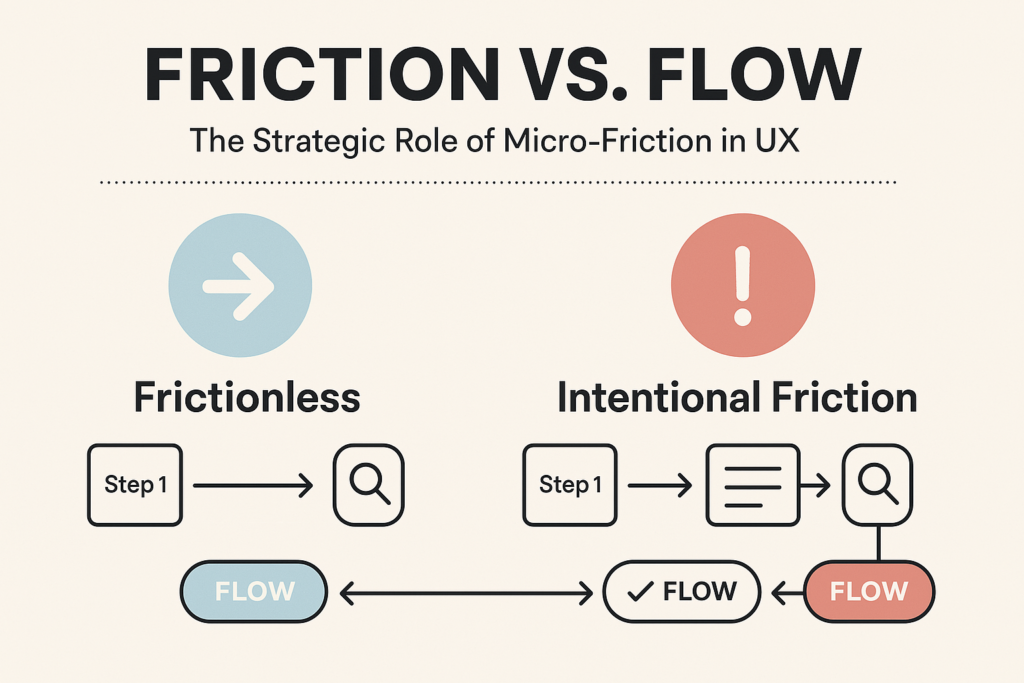In the UX world, “frictionless” has become synonymous with “good.” We obsess over minimizing steps, shaving seconds, and eliminating obstacles. But what if this pursuit of perfection is missing the point?
Sometimes, friction is not a flaw. It’s a feature.
The Myth of Frictionless Design
“Don’t make me think.” Yes, the title of Steve Krug’s classic still echoes through design teams. But the interpretation has drifted. UX isn’t about removing every ounce of friction. It’s about designing the right kind of friction.

Let’s take a look at where “perfect flow” can go wrong:
- Zero-friction = Zero memory
When interactions become too smooth, they also become forgettable. Think of swiping through 100 TikToks—you don’t remember the last one. Friction creates moments that stick. - Over-optimization kills emotion
In chasing efficiency, we often strip away the nuance, surprise, or drama. A too-perfect checkout flow might work technically—but lack any sense of celebration, confirmation, or closure. - Lack of effort = Lack of value
Behavioral economics reminds us: effort creates investment. When users work a bit—answering questions, adjusting preferences—they tend to value outcomes more. That’s why onboarding with intention often beats a “magic auto-setup.”
Friction as a Strategic Tool
Good friction isn’t a blocker—it’s a signal, a moment of reflection, or a sense of achievement. Consider these examples:
- Security prompts that remind users what’s at stake.
- Configurators that require choices to build a sense of ownership.
- Gamified UX that rewards deliberate action and progression.
- “Are you sure?” dialogs that build ethical awareness or reduce regret.
Designers shouldn’t fear friction—they should shape it. And in some contexts, friction can even create flow. Think of how video games use resistance to enhance engagement: a tough level isn’t a flaw, it’s the point.
Friction × Flow = Intentional Experience
The best digital experiences don’t just minimize pain—they shape perception. And sometimes, this means slowing users down on purpose. Let’s call this: intentional friction.
Questions to ask your team:
- Where are we removing too much friction and losing meaning?
- Where can friction add clarity, trust, or personality?
- Are we optimizing for speed… or for satisfaction?
In an age of AI-generated everything, friction might be the one thing that makes your product feel human.
—
Friction vs. Flow is not a battle. It’s a balance.
True UX mastery means knowing when to get out of the way—and when to stand in it, with purpose.
Leave a Reply